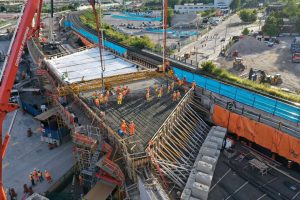The job market for engineers in Canada is forecast to be the strongest in the western provinces until 2020, but an acute shortage of skills will coexist with an abundance of people seeking work.
The job market for engineers in Canada is forecast to be the strongest in the western provinces until 2020, but an acute shortage of skills will coexist with an abundance of people seeking work.
“The shortage of highly skilled professionals is undeniably contributing to the challenges faced by Canada’s engineering industry,” said Jan Hein Bax, president of Randstad Canada.
“In order to ensure competitiveness and benefit the future growth and prosperity of tomorrow’s engineering workforce, it’s important to fully understand the current and future needs of the industry.”
Randstad Engineering and Engineers Canada recently released a report that predicts expansion demand will create an additional 16,000 jobs for engineers on a national basis by 2020.
The largest share of these jobs will be created west of Quebec, with the bulk of them in Alberta and B.C.
“Employers in British Columbia will need to source engineers from other markets for much of the coming decade,” said Stephen McCrum, the vice president of Western Canada for Randstad Engineering.
“The focus will be on specialized and experienced engineers to replace retiring workers.”
One of the two strongest engineering markets in Canada, B.C. faces skills shortages and volatile markets in resource related occupations such as mining, metallurgical and petroleum engineers.
Conditions are more balanced for computer and industrial engineers.
It will be difficult to attract workers from other western provinces due to competitive compensation levels.
The focus will be on specialized and experienced engineers to replace retirements and to meet cyclical resource driven conditions.
There was strong engineering job growth in Alberta in the past year, but there are ongoing shortages and recruiting challenges for engineers with five to 10 years of experience or specialized skills.
New graduates from engineering programs have difficulties finding jobs.
Alberta has lagged behind national trends in enrolments in engineering programs and an additional 900 engineers are needed annually to balance market demand.
“In Saskatchewan specifically, engineering markets are in a state of flux,” McCrum said.
“It is a small market, with big project demands that come and go. Local engineering programs are not meeting the cyclical demands of the market as Canadians from other provinces seek engineering jobs in Saskatchewan.”
The engineering markets in Saskatchewan are small, but they are more cyclical and more varied than other provinces.
So, supply constraints are an issue.
Resource projects are absorbing all available engineers, especially mining engineers.
Strength in resources and infrastructure related work drives tight labour markets for electrical, mining and petroleum engineers.
Local post-secondary programs are not able to keep pace with demand.
In Manitoba, increased construction activity, in particular in electricity generation and transmission, is leading to increased need for qualified engineers.
Gains after 2012 will tighten markets especially related to electricity infrastructure and other construction.
“Across western Canada, requirements to replace retiring engineers far exceed the number of new jobs created by economic growth. This contributes to a skills shortage that is most acute in the market for specialized engineers with over 10 years of experience,” said the report.
“There is an abundance of young engineering students enrolled in and completing engineering programs, but lacking practical skills.”
The report suggests that markets will function better if human resources planning for engineers includes retaining older engineers in the workforce longer and adding to programs to accelerate on-the-job training of new graduates, adapting post-secondary programs to meet the specialized needs of employers, and increasing the supply of engineers in western Canada, through post-secondary programs and immigration.










Recent Comments
comments for this post are closed